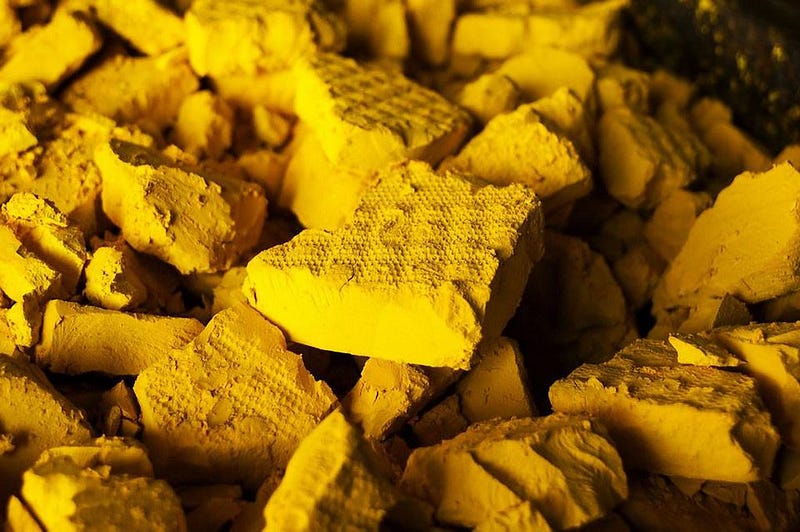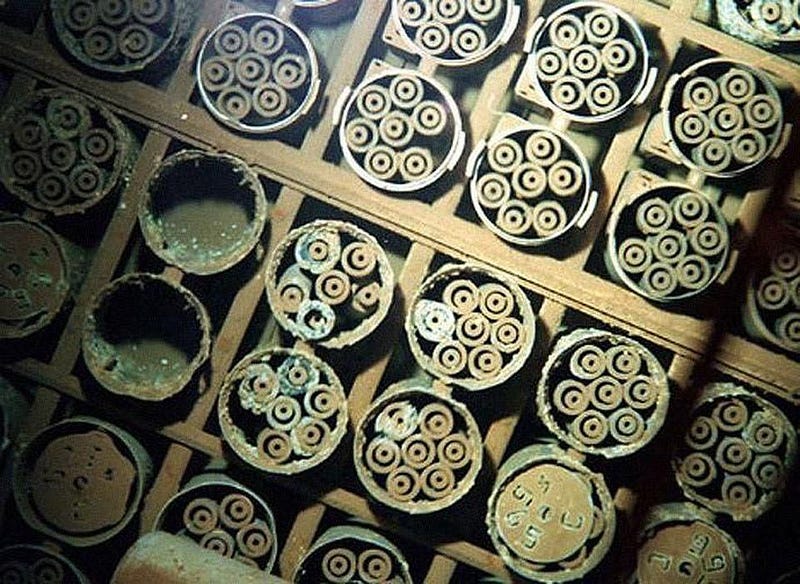Why Science Demands We Keep The Iran Nuclear Deal

In 2015, the United States brokered a revolutionary international deal with Iran about their nuclear programme. Here’s the science behind it.
In 2015, a historic agreement was reached between Iran and the international community, led by the United States, concerning nuclear power and weapons. The entire goal was simple: help Iran power their nation using nuclear energy while simultaneously ensuring that this is not a gateway to enriched uranium/plutonium enabling the production of nuclear weapons. There are many political and other voices, with no expertise in nuclear physics, opining as to whether this was a good deal or a bad deal, with no view to the actual, scientific facts. Before we look at any politics-based claims, let’s take a look at the actual physics, and then evaluate the deal with a view to the evidence.

On the energy front, nuclear power offers advantages that no other competitor can match. Unlike wind, solar, or hydroelectric power, it isn’t subject to hourly, daily, or seasonal variation: you supply the fuel and the right conditions and nuclear delivers the power you need on demand. Unlike coal, oil, or natural gas, it doesn’t produce greenhouse gas emissions (because it doesn’t combust carbon), and we’re not in any danger of running out of nuclear fuel for tens of thousands of years. Instead of relying on chemical transitions, where the configurations of electrons in atoms and molecules are changed to release energy, nuclear power relies on the process of nuclear fission, where heavy elements are split apart, releasing energy via Einstein’s E = mc2. The nuclear transitions are some 100,000 times more efficient, meaning the same amount of fuel that can power a city for a day via chemical reactions can, with nuclear reactions, last for centuries.

But there’s an insidious downside to nuclear power that goes far beyond the fear of environmental and ecological catastrophe: the fact that the by-products of these nuclear reactions produce material that could be used to build an atomic bomb. Nuclear reactors typically require uranium, and a specific isotope of uranium at that: U-235. Normal, run-of-the-mill uranium ore first needs to be processed, separating the uranium from the ore. After that separation, the uranium you get is only 0.7% U-235, with the remaining 99.3% being non-fissionable U-238. The most common type of nuclear reactor requires about 3–5% U-235, which means you need to take an additional step: converting the uranium into uranium hexafluoride, which can then be enriched to the necessary levels to make it suitable for light-water reactors.

All of this is straightforward: mine the uranium ore, extract the uranium from the ore, then enrich the uranium to reactor levels, and run your nuclear reactor. That’s how you’d give Iran, or any country for that matter, nuclear power. But there’s a dark side if you’re dealing with a nation with ulterior motives: both excessively enriched uranium (at 85% U-235 or greater) or the reactor by-products (in the form of plutonium) are the fuel you would use to create a fission bomb. In theory, uranium that was even less enriched (at perhaps 20% U-235) could be used to create a bomb, although hundreds of kilograms of uranium would be needed. Regardless of the amounts required, the danger is real. As great as nuclear power is for a nation’s energy needs, it could lead to development of the raw materials needed for a nuclear weapon.

So one precaution that needs to be taken is the examination and monitoring of the uranium enrichment procedure. If any nation is using their enrichment procedure to create overly-enriched uranium, that’s potentially bomb-making material. We have to ensure that this isn’t happening.
The other major precaution is more subtle. After U-235 is fused in a reactor, there are a slew of additional products, a number of which are highly radioactive elements not found in nature, including:
- U-236, which is a surefire “fingerprint” of spent nuclear fuel,
- four different isotopes of plutonium: Pu-238, Pu-239, Pu-240, and Pu-241,
- and some Curium: Cu-245.
If you were concerned about a nuclear weapon, it’s the Pu-239 that you have to worry about.

Unlike uranium, there’s no good way to separate out the different isotopes of plutonium. The way to determine the weapons-grade nature of your plutonium, then, is to look at how much Pu-240 there is. If you have too much, you can’t make a bomb out of it. The way we classify plutonium is as follows:
- Super weapons grade plutonium contains less than 3% Pu-240,
- Weapons grade plutonium contains less than 7% Pu-240, and
- Reactor grade plutonium contains 7% or more Pu-240.
So that’s the other thing you have to do: make sure you’re not producing weapons-grade or super-weapons-grade plutonium. Along with heavily-enriched U-235, those are the two things you need to make sure aren’t in the hands of a nuclear-weapons-free nation.

In 2015, John Kerry, then the Secretary of State, brought nuclear physicist and Secretary of Energy Ernest Moniz with him to Iran, to try and negotiate a nuclear deal. The hope was that Iran would have the freedom and ability to create energy using nuclear power, but in such a way that creating a nuclear weapon would be impossible on timescales shorter than a year. Moniz was a world expert on nuclear physics, and so was, on the Iranian side, Ali Akbar Salehi, who was the physicist overseeing Iran’s nuclear programme.

So what happened in those 2015 talks? The two nuclear physicists spent a lot of time talking about SWU, which stands for separative work units, or the amount of work needed to create enriched uranium. Part of the negotiations is each side estimating the efficiency and capabilities of the non-nuclear state to create that enriched uranium. In these negotiations, the USA’s goal was to require at least a year of efforts for the non-nuclear state in question to create bomb-worthy materials.
The other portion was to ensure that the uranium-based reactors were run “normally,” i.e., for a long period of time and until the U-235 fuel was completely spent. If you do that, 19% or more of the plutonium you produce is Pu-240, making fission bombs impossible. The reason for this is straightforward: nuclear fission produces neutrons, bigger nuclei have a bigger cross-section for absorbing neutrons, so while U-238 can easily absorb a neutron to become Pu-239 (after some radioactive decays), that Pu-239 can also easily absorb a neutron to become Pu-240. Only if the reactor is irradiated for a short period of time can Pu-239 without Pu-240 be produced.

Those two issues, involving the creation of enriched uranium and weapons-grade plutonium, are at the center of any talks concerning nuclear proliferation among non-nuclear states. It takes extraordinary expertise, including knowledge of the scientific and technological capabilities of the non-nuclear state, to perform the estimates and calculations accurately. If we get it right, and all sides act relatively responsibly, we could live in a world where many nations have access to the tremendous benefits that nuclear power brings, while still maintaining a level of global security that relies on those same nations not having access to nuclear bombs. Combine that information with agreed-upon, regular inspections by an international agency, and that’s how the Iran nuclear deal came to fruition.

The current deal had aspects that were good for a decade: until 2025, while other aspects were better for longer: there was a 25-year agreement, good until 2040, on preventing Iran from developing any nuclear weapons capabilities. The inspection procedures were internationally agreed-upon thanks to the Joint Comprehensive Plan of Action. And this deal was struck independent of any other military programs. That’s how the 2015 deal happened, and why, for the past three years, it’s been so successful. Iran’s power needs are being met, sanctions against them have been loosened, and they are no closer to a nuclear weapon than they were before the deal was struck.

So now that we’ve given the background on the science and the existing agreements, and only now, do we wade into politics. Back in October of 2017, Trump threatened to blow up the Iran nuclear deal and reimpose sanctions on Iran. Specifically, he stated that three points needed to be renegotiated:
- The removal of the sunset clause, which is the part of the agreement that ends in 2025.
- The inspection procedures must be strengthened, even though these were the procedures recommended by the IAEA: the agency doing the inspecting.
- And the addressing of Iran’s missile program, which appears to violate multiple U.N. security council resolutions.
Except for the third point, the other demands for renegotiations undermine every aspect of the already-struck deal. The historic 2015 deal represented the culmination of 13 years of negotiations between Iran, the USA, the International Atomic Energy Association (IAEA), and many NATO and UN member states. Every other world leader and agency involved wants to keep the current agreement in place. Even if Trump decertifies the deal himself, the USA must still adhere to the agreement; only with congressional approval can it be rescinded.

But if we end the deal and reimpose sanctions, all the nuclear non-proliferation policy victories immediately dissolve. The current agreement gives us a decade of peace, 25 years of absolute accountability, and regular inspections that ensure the stockpiles of radioactive materials include nothing suitable for creating a nuclear weapon. The rest of the world’s scientific experts agree. If Trump has evidence that there’s something else afoot, he owes it to the American people and the world to present it. The prior two secretaries of energy were Steven Chu and Ernest Moniz: prominent atomic and nuclear physicists; today’s secretary of energy is Rick Perry, who has been silent on the Iran nuclear deal since the 2015 diatribe that some speculate got him this job in the first place. If the United States rejects and pulls out of the Joint Comprehensive Plan of Action, we’ll see one of our greatest fears come true: ‘America First’ equates to ‘America Alone.’
Ethan Siegel is the author of Beyond the Galaxy and Treknology. You can pre-order his third book, currently in development: the Encyclopaedia Cosmologica.





